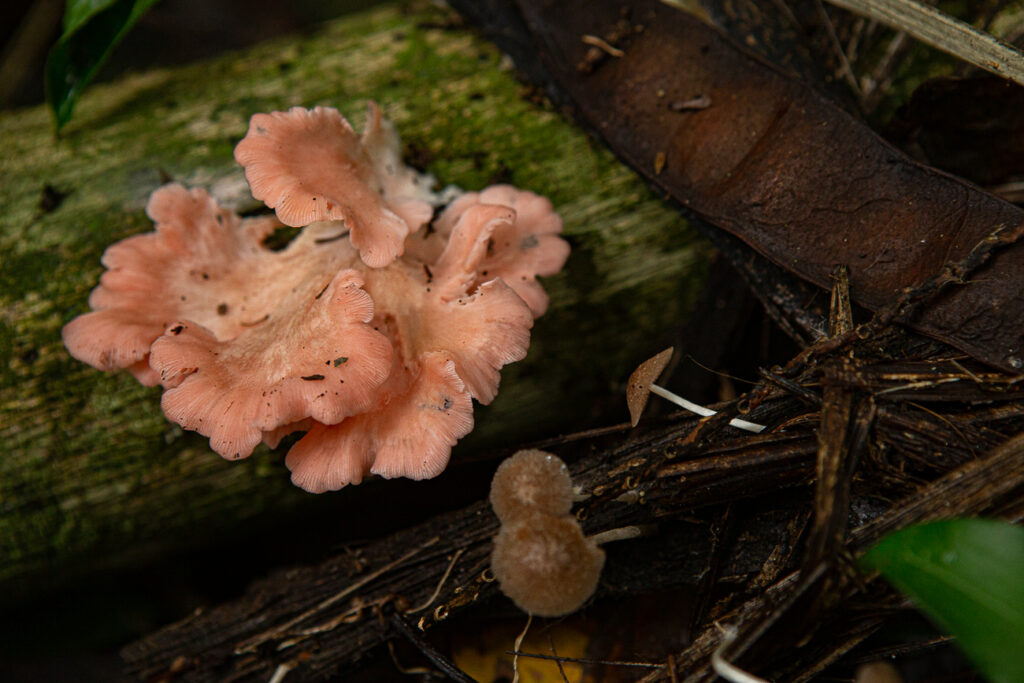Growing in small groups, like bouquets, they spread out along the trunks, coloring the place of their abode with pink. They are delicate, each with a unique and fascinating shape. As if the delight was not enough for the eyes, it is one of the most delicious mushrooms. With all this, it is impossible not to sigh when finding the Pleurotus Djamor – that lives up to its name and awakens passion in those who know it.
Present around the world and also in Brazil, the Pleurotus Djamor – known as salmon mushroom – can be found wild in nature, for the happiness of foragers, and also on the market shelves. A relative of the famous shimeji, it is a high nutritional value and low cost, bringing the potential to be more widespread. With a soft texture and very tasty, it is a mushroom that can be consumed raw or after cooking.

Collection for gastronomic experience in the experience Mushrooms of the Atlantic Forest
The Pleurotus Djamor has a traditional use in food of the Sanöma indigenous people, a subgroup of the Yanomami ethnic group, who inhabit the extreme northwest of Roraima. In the Sanöma language it is called “hiwala amo”, which means porcupine. The indigenous people usually collect these mushrooms from the embaúba trunks, which are in the central part of the swidden. For its preparation, the sanömas roast the mushrooms in the coals wrapped in leaves and, later, season with dried pepper powder. They are served with beiju and roasted green banana.
In addition to gastronomic use, studies reveal that the Pleurotus Djamor has the potential to treatment of people and the environment. In the medicinal field, research indicates that the mushroom has bioactive compounds with antibiotic, antioxidant, antidiabetic, anti-inflammatory properties, among others. In the environmental area, it has the potential to be used in the treatment of organic waste, decomposing polluting materials present in soil and water.

The Pleurotus Djamor grows glued to the trunks, its foot is short and the hat is large. A careful look at the bottom reveals a universe of lines, which seem to be traced paths taking us to another dimension – of softness, delicacy and enchantment. This part – the lamellae – is also usually inhabited by insects, which may be feeding or reproducing there. Beautiful, plentiful, tasty, good for health and the environment. What's missing to fall in love with Pleurotus Djamor?


My brother suggested I might like this blog. He was totally right. This post truly made my day. You cann’t imagine simply how much time I had spent for this information! Thanks!